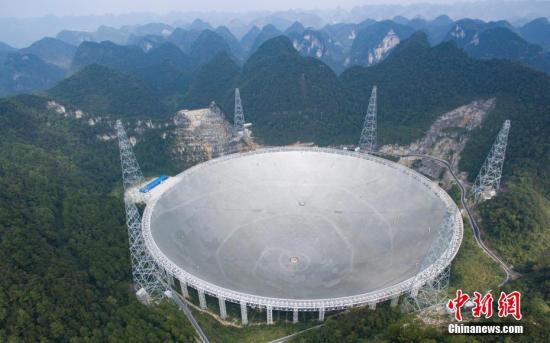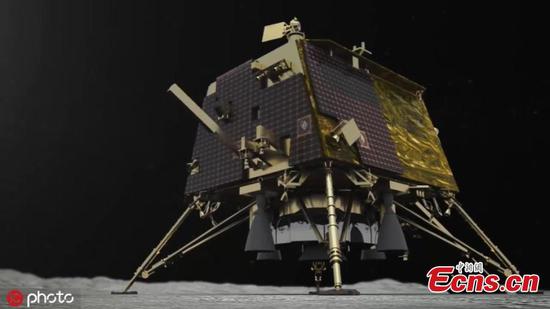
The Five-hundred-meter Aperture Spherical Radio Telescope (FAST) (File photo/China News Services)
Chinese astronomers have detected repeated fast radio bursts (FRB) - mysterious signals believed to be from a source about 3 billion light years from Earth - with the largest and most sensitive radio telescope ever built.
Scientists detected the signals with the Five-hundred-meter Aperture Spherical Radio Telescope (FAST) and they are carefully cross-checking and processing them, according to researchers at the National Astronomical Observatories of the Chinese Academy of Sciences (NAOC).
FRBs are the brightest bursts known in the universe. They are called "fast" because these blips are very short, only several milliseconds in duration. But there is no reasonable explanation for their origin.
The detection of the repeated bursts might help shed light on the origin and physical mechanisms of FRBs, said researchers.
Chinese scientists have installed a highly sensitive FRB backend on a 19-beam receiver on the giant telescope, and used it to observe an FRB source named FRB121102, which was first discovered by the Arecibo Observatory in 2015.
From late August to the beginning of September, more than 100 bursts were detected from FRB121102, the highest number of bursts ever detected so far.
The FRB backend system has high-efficiency real-time pulse capture capability, and can observe in parallel with most observation tasks. It will play an important role in the discovery of new FRBs, improving the position accuracy and capturing the high-resolution absorption lines generated by FRBs in real time, researchers said.
Given the significance of this source and its now apparent active state, FAST is carrying out more monitoring. Chinese astronomers encouraged counterparts in other countries to conduct more observations with their facilities.


















































